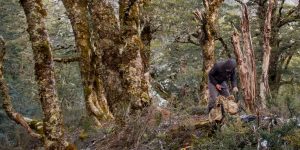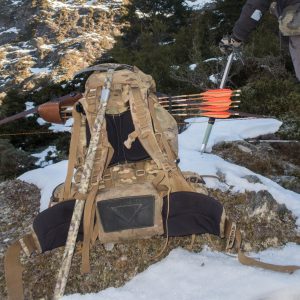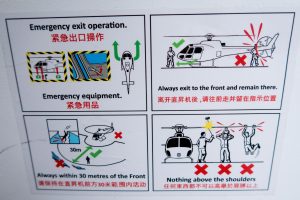
Instead of running through all my stuff, and regurgitating all the things you already know, I will focus on a few items and experiences that I think are specifically pertinent for the conditions we were in.
Ice axe
Odd place to start maybe, but the best piece of gear I took was my ice axe. I have one that is 100cm long from SMC Gear in Seattle (www.smcgear.com). If you are in Canada, the shipping cost is ridiculous, so if you can somehow finagle a different route than straight shipping, that’ll save you a lot of money.
Even though I am a short guy at 5’8″, I really like the extra length for downhill work (you can always choke up on the handle for uphill if required). I also use it as a climbing aid for uphill, hooking it around tree trunks, limbs, rocks, etc. where normally you’d need both hands, but you can’t because you are holding on to the bow. You’ll have to try it for yourself if that works for you as well. I like it.
Of course the most important functionality of the ice axe that you hope you’ll never have to use is self-arrest if ever you start sliding. I’ve argued before how two wrist-strapped hiking poles will do you no good whatsoever in in a situation like that. Just don’t do it, especially on hard-packed snow or ice, but also not on the steep fern-covered slopes in New Zealand.

Crampons
Right behind the ice-axe come crampons. I used Kahtoola micro-spikes, the old ones, before they went all light-weight on us and made the rubber all flimsy. I lost them, likely during a fall in a creek bed, and I will forever regret that. Mine fit perfectly tight on my insulated boots, and I have navigated serious ice fields with them, as well as wet, overgrown rock, and other nastiness
I’ll be on the look-out for a replacement that is as sturdy as the old ones, I am not sure I can get myself to buy the lightweight version. If you have any experience with those, let me know.
If you end up hunting in conditions that are more severe than what we had, or you are up in the ice-covered bluffs more than we were, I’d recommend full crampons. We crossed a few ice-fields, where a very long slide would end in a collision with some big rocks, and you just need 100% grip. Don’t skimp on that. If you don’t have them, buy them, and use them. Don’t get anything that looks like you might use them on your driveway after a frost. You need aggressive spikes. I handled some lightweight full crampons in a store in Queenstown that I would have bought in a heartbeat if I hunted those mountains and conditions often.
Velcro
Disclaimer: I hate velcro.
The bush we whacked during some of our climbs, Bruce the guide labeled as moderate. Truthfully, the scrub that I saw down around sea level was way worse than what we faced, but I thought it was bad enough. So bad, that on the first outing my bottle holder, including water bottle, got ripped off my belt without my noticing it. That was a good lesson; my camera case found a place inside the pack, instead of being attached with velcro straps to the belt, where I normally carry it. My advice: don’t attach anything to your pack with velcro when negotiating the West Coast bush.
Avalanche knowledge
A good idea for anybody doing what we do in the high country, is an avalanche course. Of course you will be in the capable hands of a guide, but you could end up hunting, like we did, terrain that is new to you and your guide.There was obvious evidence of avalanche, where we hunted, that had reached only half way down, but a quick look at Google Earth shows very impressive avalanche run-outs all the way to the bottom, where the creeks join the main river. The West coast weather is fickle, and a dump of snow can change conditions overnight. Some knowledge about where you might be in the most danger could help keep you out of trouble. When in doubt, stay in the fringe country between the beech forest and the low-shrub zone, and stay out of the creek beds, which basically are just avalanche funnels.
Heed the chopper egress routes
You really don’t want to stick you head into the path of the main or rear rotor. I don’t think anybody can make you look good for the casket after that.

And that’s it, my experiences and advice based on one (1) trip to a West Coast Wilderness Area on the South Island of New Zealand. Do with it what you want. Feel free to comment with any questions or remarks you might have, or contact me via the form.